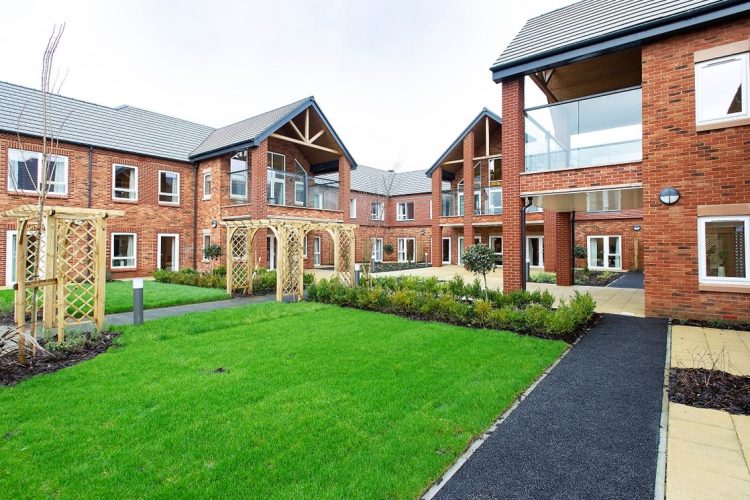The Future of Elderly Living: Trends and Innovations in Care Home Construction
In an era where the aging population is increasing rapidly, the demand for quality elderly care facilities is at an all-time high. As society continues to prioritize the well-being and dignity of senior citizens, the field of care home construction has evolved to meet new expectations. This evolution is not merely about building structures but about creating safe, comfortable, and engaging environments for aging individuals.
With rising expectations for personalized care, accessibility, and modern amenities, the role of specialized care home construction services has never been more vital. Companies like Care Home Builders have been at the forefront of this transformation, developing innovative and sustainable living spaces tailored to meet the unique needs of older adults.
This blog explores the latest trends, technologies, and design principles shaping the future of elderly living through advanced care home construction methods.
Understanding the Need for Advanced Care Home Construction
The global population of individuals aged 65 and above is growing at a significant rate. According to the World Health Organization, by 2050, the world’s elderly population is expected to double to 1.5 billion. With this demographic shift, there is an increasing demand for long-term care facilities that are not only functional but also emotionally fulfilling for residents.
Care home construction plays a critical role in addressing this need. These specialized projects require careful planning, regulatory compliance, and an in-depth understanding of senior citizens’ physical and psychological needs. Unlike standard residential buildings, care home construction must incorporate features such as wheelchair access, emergency call systems, non-slip flooring, and community spaces that promote social interaction.
Key Components of Modern Care Home Construction
To truly support the well-being of elderly residents, modern care home construction projects include several critical components:
1. Accessibility and Safety
Safety and accessibility are top priorities in any care home construction project. Builders must design spaces that accommodate mobility challenges, including ramps, wide doorways, and accessible bathrooms. Non-slip flooring, handrails, and proper lighting are essential elements to prevent accidents.
2. Technology Integration
Smart technologies are transforming care home construction. Innovations such as automated lighting, voice-activated devices, and telemedicine rooms are becoming standard features. These technologies not only improve safety and efficiency but also enhance the quality of life for residents.
3. Sustainable Building Materials
Environmentally friendly materials and energy-efficient systems are increasingly used in care home construction. Solar panels, energy-efficient HVAC systems, and sustainable insulation reduce operational costs and minimize environmental impact.
4. Home-Like Design
Creating a homely atmosphere is crucial in care home construction. Instead of cold, institutional environments, modern care homes are designed to resemble private residences. Warm colors, personalized rooms, and inviting common areas help residents feel more at home.
Innovations in Care Home Construction
As demand for care facilities rises, innovation has become central to the care home construction industry. Let’s look at some of the most promising advancements:
1. Modular Construction
Modular building techniques are revolutionizing care home construction. These methods allow for faster build times, reduced costs, and consistent quality. Prefabricated units can be customized to meet various care requirements and can be easily scaled up or down.
2. Biophilic Design
Biophilic design is gaining popularity in care home construction. It emphasizes the integration of natural elements like plants, natural light, and water features into living spaces. Studies show that exposure to nature enhances cognitive function, reduces stress, and improves overall well-being for seniors.
3. Dementia-Friendly Architecture
Special attention is being given to designing spaces for residents with cognitive impairments. Care home construction now often includes clear wayfinding systems, secure outdoor areas, and calm, uncluttered environments that help residents with dementia feel safe and oriented.
4. Community-Centric Layouts
Today’s care home construction is shifting toward community-based layouts. Instead of isolated rooms, care homes are being built with neighborhoods or small “villages” that encourage interaction among residents. These designs promote independence while fostering a strong sense of community.
Challenges in Care Home Construction
Despite the exciting innovations, care home construction is not without challenges. One of the biggest hurdles is navigating the complex web of regulations and compliance standards. From zoning laws to health and safety codes, builders must ensure every aspect of the facility meets stringent requirements.
Additionally, balancing budget constraints with high-quality construction and personalized care is an ongoing challenge. Many developers turn to experienced firms like Care Home Builders, who understand the nuances of care home construction and can deliver projects on time and within budget.
The Role of Customization in Care Home Construction
No two care homes are exactly alike. Customization is key to successful care home construction, as it allows for the integration of specific features based on the target demographic. For example:
-
A care home for veterans might include design elements reflecting military service.
-
Facilities for individuals with Alzheimer’s may require specialized lighting and color schemes.
-
Luxury care homes may offer private suites, gourmet dining, and wellness spas.
By tailoring designs to meet the physical, emotional, and cultural needs of residents, care home construction can create truly life-enhancing environments.
Sustainability and the Future of Care Home Construction
Sustainability is more than just a trend; it’s a necessity. As the construction industry grapples with environmental concerns, care home construction is increasingly embracing green practices. Key sustainable strategies include:
-
Energy Efficiency: LED lighting, low-flow plumbing, and energy-efficient appliances.
-
Waste Reduction: Recycling construction materials and using prefabricated components.
-
Green Roofs and Solar Panels: To reduce carbon footprints and operational costs.
These initiatives not only help the planet but also appeal to environmentally conscious investors and residents.
Government Policies and Their Impact on Care Home Construction
Regulations and funding initiatives heavily influence care home construction. In many countries, governments offer tax incentives or grants for developers who build long-term care facilities. However, compliance with healthcare regulations, fire safety standards, and accessibility laws can add layers of complexity.
Working with experienced partners in care home construction is essential to navigate these challenges smoothly. These professionals stay updated with changing legislation and ensure that facilities are both legally compliant and future-ready.
Why Choose Experts in Care Home Construction
Investing in a care home is a significant decision, whether you’re a private investor, a healthcare organization, or a nonprofit. Partnering with an expert in care home construction ensures:
-
Compliance with health and safety regulations.
-
Efficient project management.
-
Modern, innovative designs.
-
Cost-effective and sustainable building methods.
This is where businesses like Care Home Builders excel, bringing together deep industry knowledge, technical expertise, and a compassionate approach to elderly care.
Conclusion: Building a Better Future Through Care Home Construction
The world of elderly care is undergoing a transformation, and at its heart is the revolution in care home construction. It’s no longer just about providing shelter; it’s about crafting environments that promote dignity, independence, and community. From innovative designs and sustainable practices to smart technology and personalized spaces, the future of care homes is brighter than ever.
By understanding the unique needs of older adults and committing to excellence in building practices, today’s developers are laying the foundation for a compassionate, efficient, and forward-thinking elder care system.
Whether you’re planning a new care facility or upgrading an existing one, choosing professionals who specialize in care home construction is the key to success. With experience, empathy, and innovation, experts like Care Home Builders are changing the way we care for our aging population—one thoughtful, beautifully designed structure at a time.













